Vintage Treasures: Cave of Stars by George Zebrowski
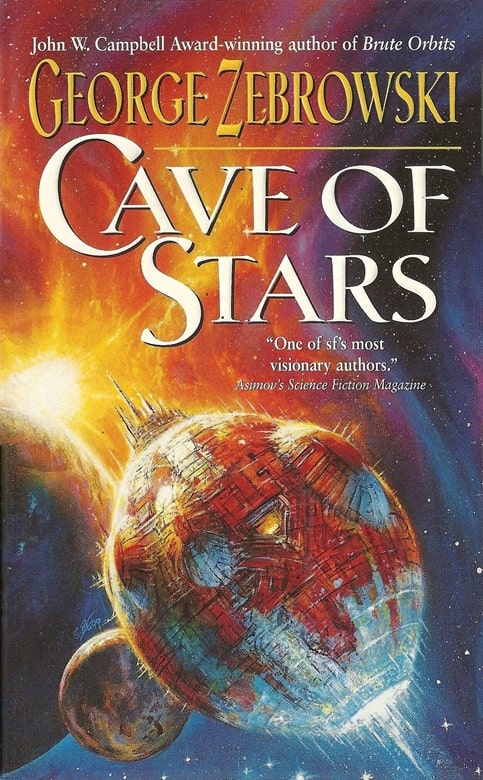 |
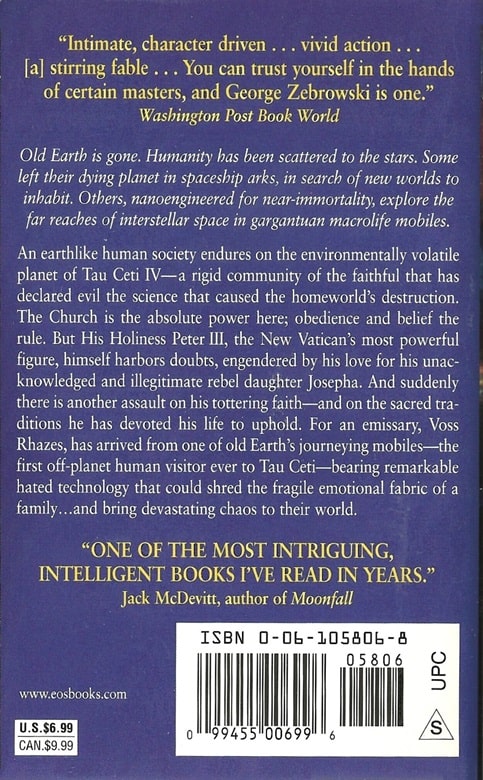 |
Cave of Stars (Eos/HarperCollins, December 2000). Cover art by Bob Eggleton
I don’t know much about George Zebrowski.
I probably should. According to ISFDB he’s written more than a dozen science fiction novels, including the John W. Campbell Award-winner Brute Orbits (1999). He’s edited over a dozen anthologies, including four Synergy volumes and three Nebula Awards collections, and was the editor of The Bulletin of the Science Fiction Writers of America from 1970-74, and again from 1983-90. With his domestic partner Pamela Sargent he’s produced four Star Trek novels, and all on his own he published four collections of short fiction. That’s a pretty impressive career no matter how you slice it.
But I’ve never read any of his fiction, so when his 1999 novel Cave of Stars showed up in a small paperback collection I bought on eBay last year, I was very intrigued.
[Click the images for star-sized versions.]
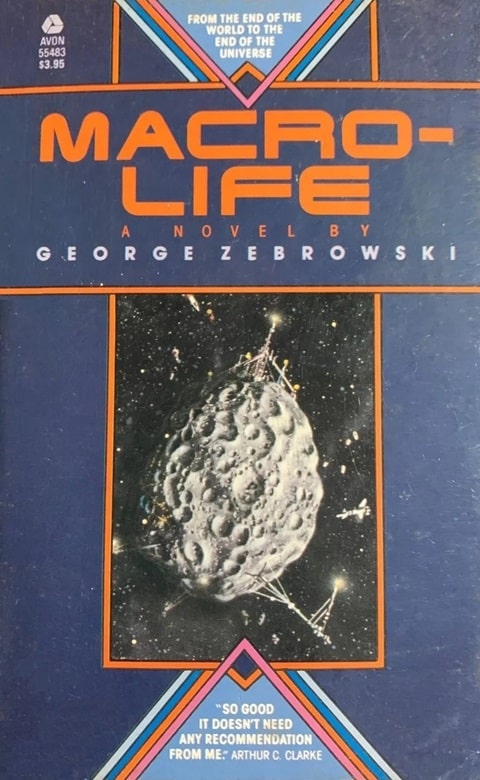 |
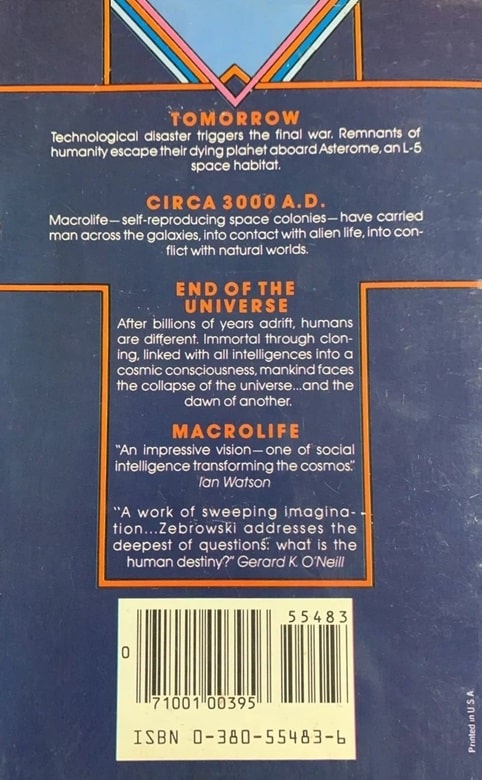 |
Macrolife (Avon, September 1981). Cover art by Rick Sternbach
Turns out Cave of Stars is the sequel to a much older novel: Macrolife, published twenty years earlier in 1979. The setting they share is pretty interesting: after a technological collapse and a devastating war, the last remnants of mankind flee to the stars in self-replicating space colonies. By 3000 A.D. man is living comfortably in space, where it makes contact with alien life. After a billion years in space, mankind is effectively immortal and linked together in a community consciousness — and finds itself confronting the end of the universe.
Tony Chester offers a fine modern take.
[Macrolife] has long since been hailed as a “classic” and a “masterpiece” and who am I to disagree? Luckily I feel no such inclination: it is an SF classic and a book which contains all the sense of wonder that truly good SF could wish for… Macrolife has a plotline that covers a huge tract of time and, accordingly, is split into three sections dealing with epochal moments in the future of humankind.
It starts in 2021 with the Bulero family and a disaster that befalls humanity, forcing the remnants of the species into space habitats. One of these is mobile, a hollowed out asteroid capable of containing many thousands and, as it travels the stars (having handily discovered a form of FTL travel), it reproduces using the resources of other star systems. The next section is set a thousand years later when, during one of these reproductive stopovers, a Bulero descendant experiences planet-bound life and comes to understand the tensions between mobile humanity and dwellers in gravity wells. This section culminates in a return to Earth space and a first contact situation. The final section is set close to the end of the universe when human and alien macrolife has long since joined into a united consciousness, but must now face the Big Crunch. A version of Bulero is resurrected from the group mind to face the coming challenge.
Macrolife ticks all the right boxes, and it is probably its very unfussiness that has contributed to its longevity. Of course, it could just be that I’m the right age to have enjoyed its wonder first time around, and to now be remembering it (upon re-reading) nostalgically…? But I don’t think so: good is good and quality tells, and I’m damn sure there’s many a current writer of SF who would give their right arms to write a book that will survive as long as this one. Needless to say, recommended to all.
Read the whole review at Concatenation.org.
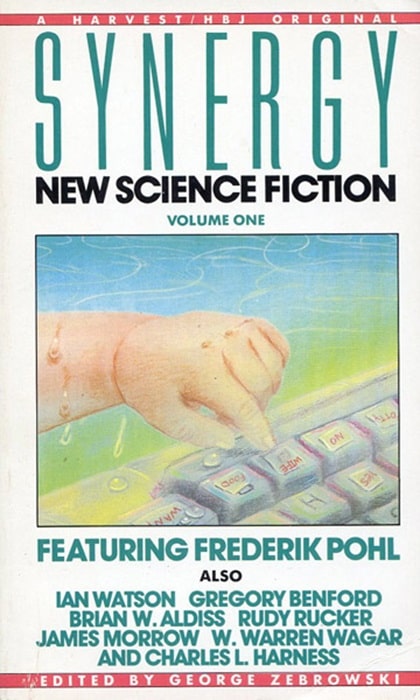 |
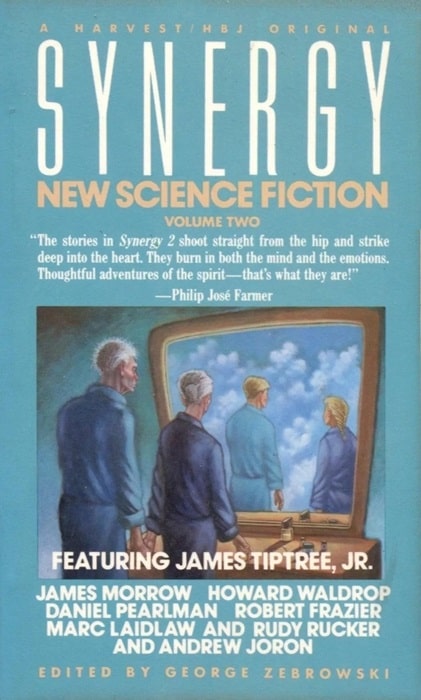 |
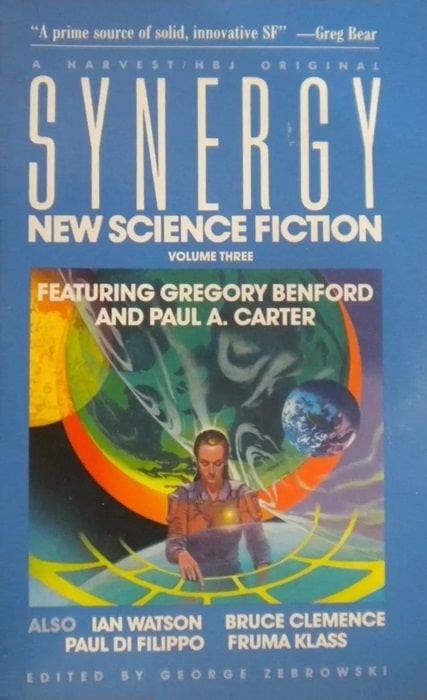 |
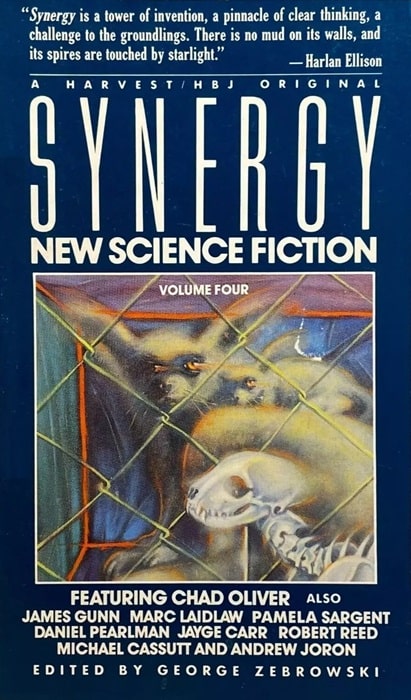 |
The first four volumes of Synergy SF, edited by George Zebrowski (Harvest/HBJ,
1987-1989), containing original fiction by Brian Aldiss, Frederik Pohl, James
Tiptree Jr, Howard Waldrop, Ian Watson, Pamela Sargent, Robert Reed, and many
more. Cover art by Catherine Deeter, Lambert Davis, Alan Okamoto, and John Dispenza
Cave of Stars picks up the tale in an interesting way, focusing on the events surrounding the arrival of a utopian mobile habitat carved out of an asteroid at a planet-bound civilization controlled by a theocracy — with devastating results. Here’s Kevin Phyland’s concise review at Goodreads.
When the human diaspora left a dying Earth it went in two ways, using giant modified asteroids as habitats, run by an AI Link, the combination known as Macrolife; and as settlement ships, designed to reach a habitable planet and land there. When a Macrolife orbital reaches the settled planet Ceti IV after three centuries, they are keen to make contact but do not fully comprehend the consternation their visit has caused. Ruled by a Catholic-based religious hierarchy, the discovery that the residents of the orbital ship are extremely long-lived due to medical technology, causes a crisis of conscience with the aging Pontiff, who must weigh his afterlife soul with continued worldly existence. A crisis he fails, and in his humiliation he lashes out with a centuries-old weapon lying dormant on the starship they used to reach Ceti IV, still in orbit. When the Macrolife orbital takes the old starship on board, the Pontiff triggers the weapon, destroying most of the orbital, and putting it into a collision course with the planet. The orbital is a hundred kilometres long and a strike would be an extinction-level-event for both Ceti IV and the Macrolife orbital.
George Zebrowski examines the power of jealousy and hate in this entertaining, if rather depressing book. The struggle to avoid impact and the preparations for what happens after is the core of the tale.
Cave of Stars made the preliminary Nebula ballot in the year 2000, but didn’t receive enough votes to make the final nominee list. But based on what I’ve discovered so far, it looks like a great place to start exploring George Zebrowski’s impressive career.
Cave of Stars was published in hardcover by HarperPrism in August 1999, and reprinted in paperback in December 2000 by Eos/HarperCollins. It is 260 pages in paperback, priced at $6.99. A digital version was released in 2014 by Open Road Integrated Media. The cover art for the HarperCollins editions is by Bob Eggleton.
See all our recent Vintage Treasures here.
IIRC it is a sequel to Brute Orbits, which is one of his better works.
Pretty sure the only George Zebrowski I’ve read is The Killing Star, the novel he wrote with Charles Pellegrino that opens with about 99.9997% of the human race getting wiped out by a relativistic strike launched by hostile aliens. It’s cheery!